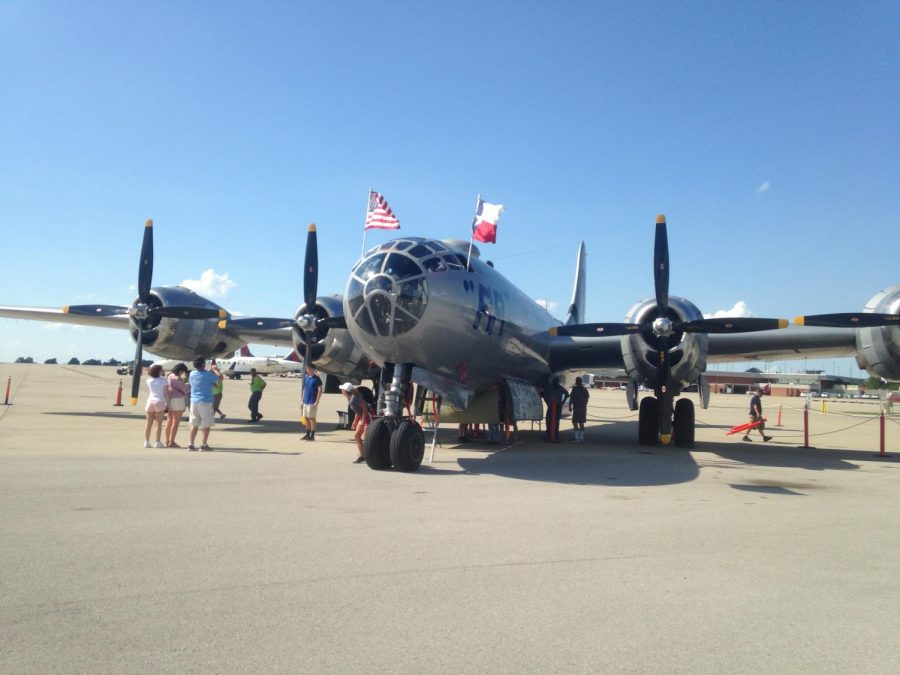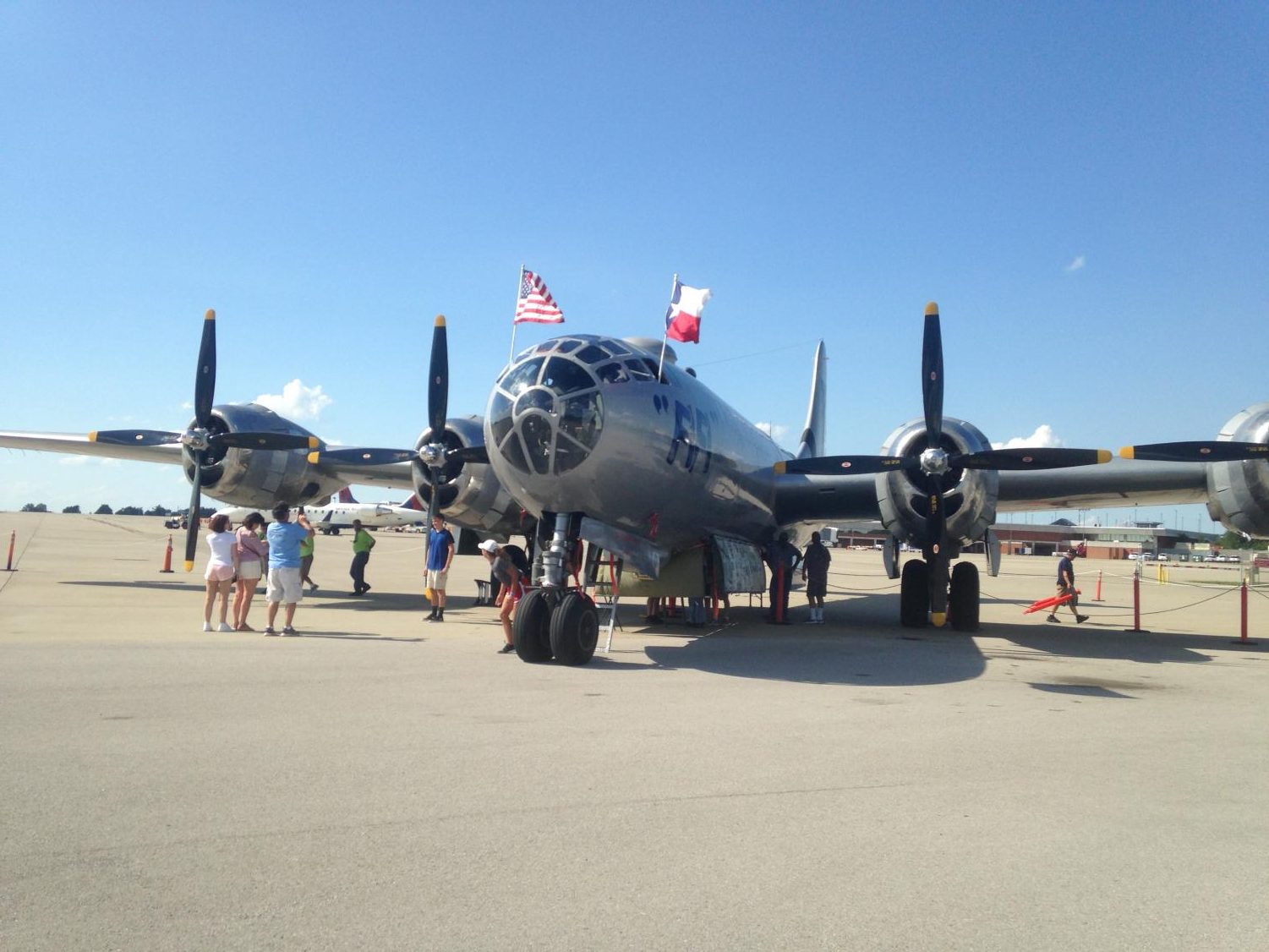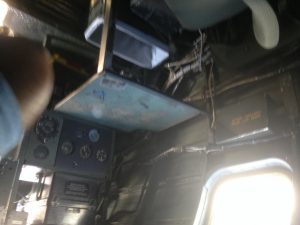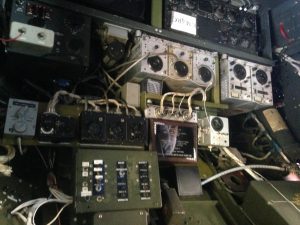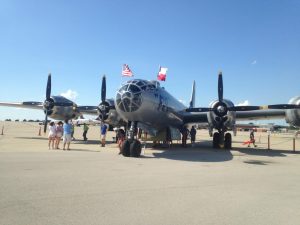The Coolest Aircraft: A Countdown
Since the Wright brothers’ flight at Kitty Hawk, back in 1903, we’ve come a long way. From the smoggy skies of WW1 to the modern era, here are some of the greatest aircraft ever to take to the sky.
May 18, 2018
It’s been well over 110 years since the first successful airplane flight. While the first planes were made from wood and canvas, pilots today fly massive metal masterpieces that can top out at speeds so high that the government keeps them secret. Planes and jets come in all different shapes and sizes for any role imaginable, from the nimble DR-1 fighter to the titanic Tu-95 bomber. The list below details some of the most well-known aircraft ever made, subject to my own personal analysis, of course. The 10 aircraft listed below are merely what I believe to be the most influential or well made in history.
10: The MiG-15 “Fagot” (Russia)
The MiG-15, given the reporting name “Fagot” by NATO (meaning a bundle of iron rods for shaping into bars), was developed in 1949 for the Soviet Air Force, and saw widespread use by the Korean People’s Army (North Korea) and the People’s Liberation Army (China). While not particularly great by modern standards, it was mass-produced and handed out between communist-bloc countries, essentially becoming the AK-47 of planes. Analysts consider the Fagot to be one of the premiere aircraft of the Korean War, providing air support for the Chinese army and countering the newly-formed USAF’s F-86 Sabre. Though outdated before the war ended, at least several hundred MiG-15’s are still in active service in North Korea’s air force.
9: North American F-86 Sabrejet (US)
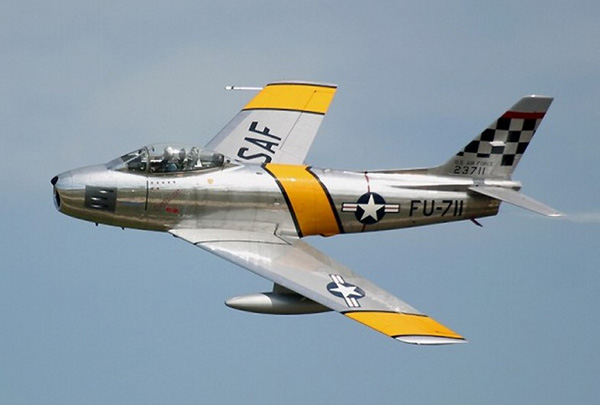
The F-86 Sabre is the most produced Western Fighter of all time, with 9,000+ units constructed. It was originally designed for the US Army Air Corps in the last year of its existence before it became the US Air Force, and cut its teeth in the Korean War against the MiG-15, where it proved to be slightly better. Even after the war, countries continued to use modified variants of the Sabrejet, with the Bolivian Air Force using theirs up until 1994. The Sabre is considered one of the most important and widely produced jets of all time.
8: North American P-51 Mustang (US)
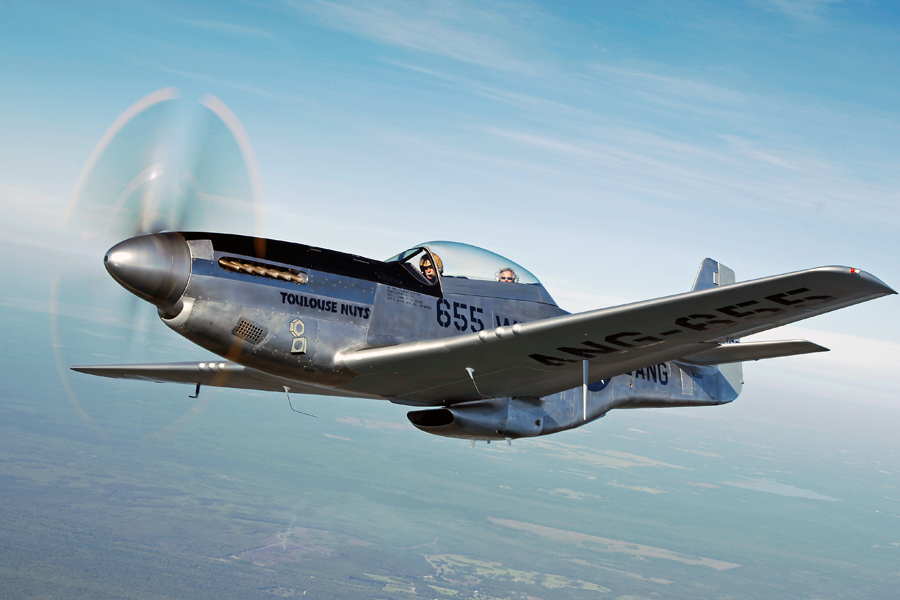
The P-51 Mustang was a breakthrough. Until the advent of the Mustang, allied fighters were generally unable to protect bombers on long-distance missions, leading to unacceptably high casualties due to German fighters picking them off. The P-51 changed that, however, being able to fly as high and as long as necessary for missions, though by 1944 they were largely hunting down the remains of the German airforce. Not only was it revolutionary for the allies, but it put the fear of God into the Luftwaffe wherever they were encountered, with massive patrols speeding past their bomber flights and annihilating entire formations of Fw-190’s and Bf-109’s, largely considered to be some of the most dangerous aircraft the Germans had to offer. When the Luftwaffe started avoiding these relatively new “fighter sweeps”, the Mustangs chased them to their airfields and eliminated them before they could even get airborne, allowing the British to resume bombing Germany during the daytime. After the war, Reichsmarshall Hermann Goring was reported to have claimed “When I saw Mustangs over Berlin, I knew the jig was up”.
7: Republic P-47 Thunderbolt (US)

Very few planes are as cool as the P-47. While technically considered a fighter, it was a very heavy one, and was incredibly durable, resulting in its use as a ground attack plane wherever possible. This weight, however, made it one of the short-range escorts that the Mustang was designed to replace. Despite this shortcoming, its insane amount of armor, coupled with a massive payload of 2500 lbs, made it one of the most dangerous ground-attack craft of the war, claiming an estimated 170,000 ground targets from 1941-1945. Captured German Aces attested to their resilience, with one suggesting that special tactics were needed to counter its unprecedented durability. It passed on its name to a modern plane of similar characteristics, the A10 Thunderbolt II.
6: Junkers Ju 87 Stuka (Germany)
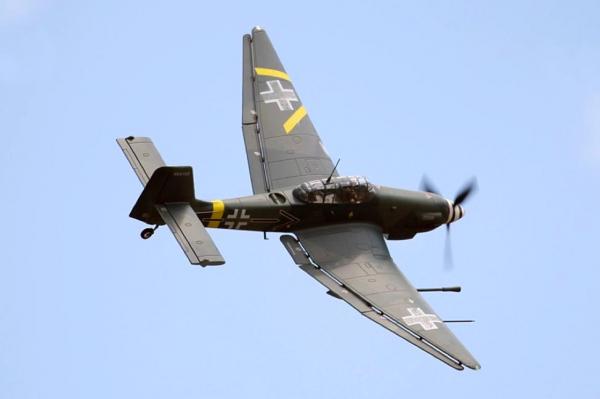
The Junkers Ju 87 “Stuka” (derived from the German word for divebomber) cut its teeth over Spain in 1937, proving itself to be an immensely effective aircraft. When the invasion of Poland came around, the Stuka gained a reputation as THE air element of the Blitzkrieg, with its high payload, accurate delivery, and the sheer psychological effect induced by its distinct silhouette. If the sheer presence of a Stuka flight didn’t scare you badly enough, you’d get a taste of The Trumpet of Jericho, a siren system set up in the landing gear. The boomber would dive straight down, screaming at its target the whole way, before dropping its payload and pulling out of the dive. This often caused pilots to black out due to G-force, leading the Germans to invent the first automatic dive breaks, which would pull the plane out of a dive should the pilot lose consciousness. The 1,000 lb bombs, the screeching, and the knowledge that you were about to be swarmed by some of the most dangerous infantry and armor of the period, is what conquered Europe, and forced the French to surrender in less than 2 months. Though, as the war went on, and those blasted Mustangs kept killing all the fighters, the Stuka slowly became useless due to poor armor, maneuverability, and defensive capabilities, and was slowly phased out in favor of modified Focke-Wolfe 190 fighter aircraft.
5: Me-262 (Germany)

The Me-262 is somewhat of a rarity. Despite over 1,000 being built, only a few hundred were ever deployed. It was essentially the Tiger I of air combat, incredibly dangerous, over-engineered, and too late to change the course of the war. Generally, when they worked, they were impossible to kill, but technical problems and poorly trained pilots were all-encompassing problems. If you pushed the throttle too abruptly, there was a high chance you’d burst into flames and explode. The speed at which the engine stalls (stops functioning due to thin atmosphere) is incredibly high, and it was too fast to hit stuff effectively without special equipment (causing them to use American flying styles used against the Japanese in the Pacific). Despite this, however, it proved nearly impossible to shoot down, with the electric guns on bombers too slow to track it and other aircraft too slow to intercept the. The British managed to kill a few with a method called the “Rat Scramble”, but this was only effective for a short time. Basically, when a 262 was sighted, British fighters hurried to the airstrip that the 262 launched from and shot them down when they were landing, IE the only time that the craft was vulnerable. This was stopped by hundreds of flak emplacements near the 262 base. The reason its on this list, however, is because it brought about a new age. The 262 was the first jet fighter in history, ushering in the high-tech aircraft we have today.
4: Fairchild Republic A-10 Thunderbolt II (US)

The A-10 Thunderbolt 2, dubbed ‘Warthog” isn’t so much a revolutionary vehicle as it is an iconic and effective one. As a Cold War veteran, the Warthog specialized in killing tanks, but could deal with just about anything it was presented with. Its main armament, the 30 mm Gau-18, can chew threw a tank like it was wet cardboard, collapse structures as if they were some cheap knockoff legos, or liquefy infantry, all while emitting a low rumble dubbed “the purr of freedom” that can be seen here. Its proven, on multiple occasions, to be nearly indestructible, having survived hits that would’ve been immediately fatal to lesser aircraft. The pilot, for his or her protection, sits in what is essentially a titanium bathtub, reducing the already low chance of harm coming to them. There are images of A-10’s that have flown back to base with one of their engines blown out and destroyed. In addition to the sheer firepower and armor, skilled pilots have reportedly outflown F-18’s in War Games by forcing them to fly at lower speeds, out of their element and on the A10’s slow-moving turf, though this is the exception, not the rule. Regardless, it’s pretty cool. It’s like the Terminator, but a plane.
3: Boeing B-29 Superfortress

The B-29 Superfortress is the younger, sexier cousin of the B-17 Flying Fortress. Equipped with the first ever pressurized cabin, radar-guided electric turrets, and flying higher than any Japanese plane could reach, with a flight ceiling of almost 30,000 feet (though they rarely did this, just because of how impractical it was at the time). The B-29 is what carried out the firebombing of the Japanese home islands, and two specific craft dropped the atom bomb onto Hiroshima and Nagasaki. Enola Gay dropped Little Boy on Hiroshima, and Boxcar dropped Fat Man on Nagasaki. After the war, B-29’s made up the majority of the American Strategic Air Command’s nuclear bombers, keeping the Soviet Union at bay. Now, only two B-29’s remain, Fifi and Doc. Fifi flew into Bluegrass Airport, and I was graced with the privilege of entering the cabin (the tube that connects it to the fire control bay was sealed for undisclosed reasons).
2: Lockheed-Martin F-22 Raptor
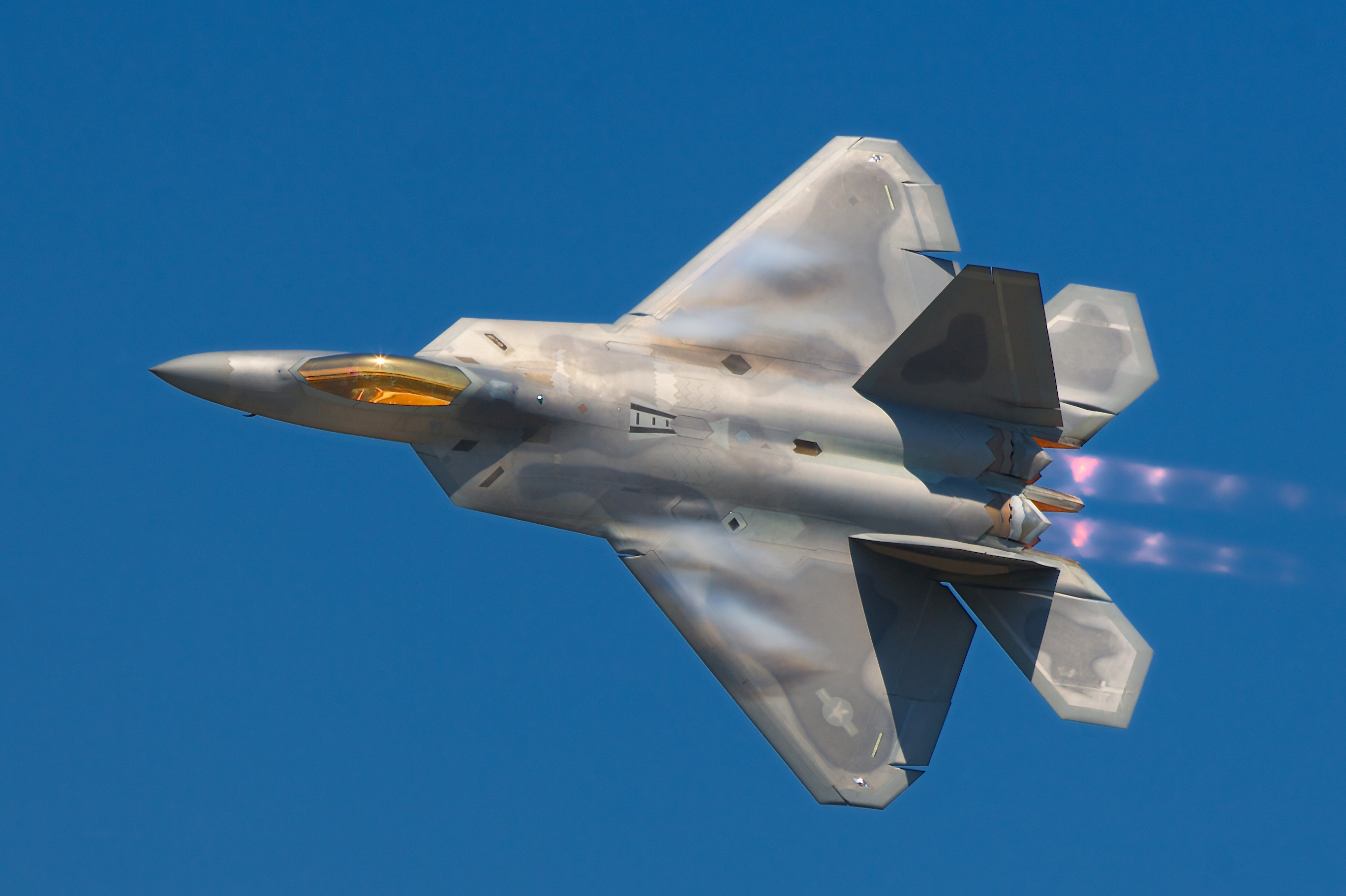
The F-22 is easily one of the most iconic American jets of the Modern Era. Its distinct appearance, high-tech equipment, and ridiculous speed (over twice the speed of sound) make it a favorite of movie-makers, making appearance in the likes of Transformers as Starscream’s form of choice and Iron Man as Whiplash 1, sent to intercept the titular hero. Though it’s relatively untested compared to the battle-hardened A-10, what little performance these aircraft have shown has been absolutely flawless, providing precise close support for Kurds fighting IS and eliminating Syrian Sukhoi aircraft that threaten Coalition Forces. If the A-10 is a Terminator, than the F-22 is a Predator, if you’ll pardon the movie references.
1: Boeing F/A-18 Hornet & Variants
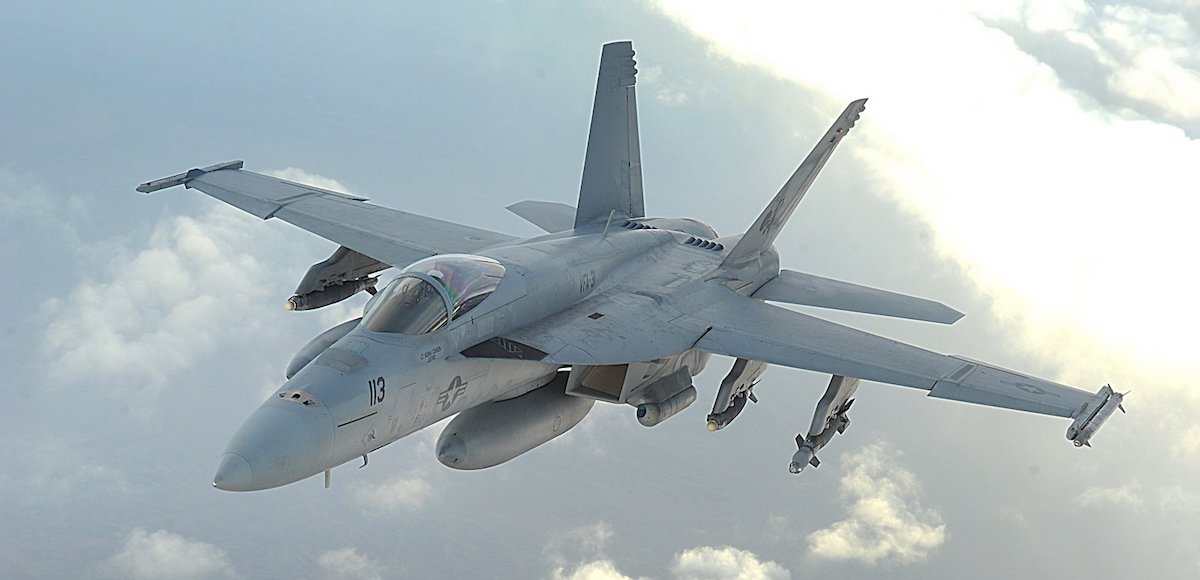
The Hornet is easily the face of modern warfare, equally capable of putting ordinance onto a pinpoint and taking down enemy aircraft in the same mission. The carrier borne two-seater is primarily used in ground attack roles, since we usually don’t fight groups that have an actual air force. The record of the F-18 is solid, as its armament and equipment, but that’s not why it’s at the top of the list. That reason is its reliability, and its prominence as the main tool the US deploys to spank ground targets. From Iraq to Syria, the F-18 dots the skies, removing airborne threats to our allies and cratering opposing ground forces. Amy McGrath, a Kentucky congressional candidate, served as a weapons operator (not the pilot) in support of marine forces over Iraq. Notable actions include dogfighting over Syria and protecting the evacuation of Kurdish and Yazidi civilians, who IS is attempting to genocide in their perpetual retreat.
So, that’s my list, even with a few photos I forgot I had. I hope you enjoyed reading it as much as I did writing it.

